Cold cream is a type of facial cleanser and moisturizer that has been used for centuries to clean and hydrate the skin. It's made from a mixture of water, oil, and wax, which creates a thick and creamy emulsion that can be used to remove dirt, makeup, and other impurities from the skin.
The name "cold cream" comes from the fact that it feels cool and refreshing when applied to the skin. It's also known for its gentle and nourishing properties, which make it suitable for all skin types, including dry and sensitive skin.
Cold cream works by creating a barrier on the skin's surface that helps to prevent moisture loss and protect against environmental irritants. The oil and wax in the cream act as emollients, which help to soften and smooth the skin, while the water helps to hydrate and refresh.
To use cold cream, apply a small amount to your face and gently massage it in using circular motions. Use a warm, damp washcloth or cotton pad to remove the cream and any impurities from your skin. Some people prefer to leave the cream on for a few minutes before wiping it off to allow it to fully hydrate and nourish the skin.
Overall, cold cream is a gentle and effective way to cleanse and moisturize your skin. It's a classic skincare staple that has stood the test of time and remains a popular choice among people who value natural and nourishing ingredients.
What is Cold Cream Made Of?

Cold cream is made of a mixture of water, oil, and wax, which are emulsified together to create a thick and creamy texture. The specific ingredients and ratios can vary depending on the manufacturer and recipe, but the basic components of cold cream are:
-
Water: This is the main liquid component of the cream and helps to hydrate and refresh the skin.
-
Oil: Oils such as mineral oil, almond oil, or coconut oil are commonly used in cold cream to provide moisturization and nourishment to the skin.
-
Wax: Wax such as beeswax or candelilla wax is added to cold cream to create a thick and creamy texture and to help create a barrier on the skin that prevents moisture loss.
-
Emulsifier: An emulsifier is added to help combine the oil and water components of the cream and create a stable emulsion. Common emulsifiers used in cold cream include borax or beeswax.
Additional ingredients may be added to cold cream to provide additional benefits to the skin, such as glycerin, aloe vera, or essential oils. Overall, the combination of these ingredients creates a gentle and nourishing cleanser and moisturizer that is suitable for all skin types.
History of Cold Cream

The origins of cold cream can be traced back to ancient civilizations such as the Greeks and Egyptians, who used a mixture of oils, beeswax, and rosewater to cleanse and moisturize their skin. However, the term "cold cream" specifically refers to a formula developed in the 1800s by a French chemist named Théophile LeClerc.
LeClerc's cold cream formula was made of a mixture of beeswax, almond oil, and rosewater, and it became popular among wealthy women in France who were seeking a gentle and effective way to cleanse and moisturize their skin. The formula was called "cold cream" because it had a cooling effect on the skin when applied.
Cold cream continued to gain popularity throughout Europe and eventually made its way to the United States, where it was embraced by Hollywood stars and beauty enthusiasts alike. The cream was particularly popular in the 1950s and 1960s, and it remains a classic skincare product to this day.
Over the years, the basic formula of cold cream has been modified and adapted to suit different skin types and preferences. However, the core ingredients of oil, wax, and water remain the foundation of the cream and continue to provide effective cleansing and moisturization for the skin.
Cold Cream vs. Traditional Cleansers
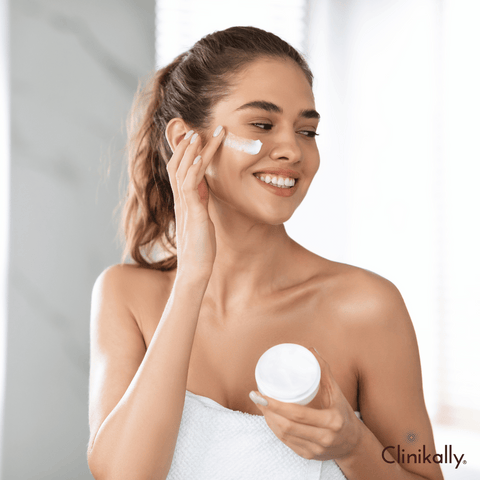
Cold cream and traditional cleansers are both used for cleansing the face, but they work in different ways and have different benefits.
Cold cream is a type of moisturizer that is used to cleanse and moisturize the skin at the same time. It is a thick, emollient cream that is applied to the face and then wiped off with a tissue or cotton pad. Cold cream is particularly effective at removing makeup and dirt from the skin, and it leaves the skin feeling soft and supple. It is also gentle on the skin and can be used by people with sensitive skin.
Traditional cleansers, on the other hand, are specifically formulated to remove dirt, oil, and impurities from the skin. They come in a variety of forms, such as foaming cleansers, gel cleansers, and cream cleansers. Traditional cleansers can be harsh on the skin if they contain harsh surfactants or if they are used too frequently. However, they can be very effective at removing oil and impurities from the skin, which can be important for people with acne-prone skin.
In summary, cold cream is a good option for people with dry or sensitive skin who want to cleanse and moisturize their skin at the same time. Traditional cleansers are better for people with oily or acne-prone skin who need a more thorough cleansing.
Benefits of Cold Cream for Your Skin

Cold cream is a popular skincare product that has been used for decades to cleanse and moisturize the skin. It is made with a mixture of water, oil, and emulsifiers, which creates a thick, creamy consistency that is easy to apply and effective at removing dirt, makeup, and other impurities from the skin. Here are some of the benefits of using cold cream for your skin:
-
Cleanses the skin: Cold cream is an effective cleanser that can help to remove dirt, oil, and makeup from the skin. It works by dissolving these impurities, making it easy to wipe them away with a tissue or cotton pad.
-
Moisturizes the skin: Cold cream is also a great moisturizer that can help to hydrate and nourish the skin. The oil content in the cream helps to lock in moisture, leaving the skin feeling soft and supple.
-
Soothes dry and sensitive skin: Cold cream is a gentle product that is suitable for people with dry or sensitive skin. It can help to soothe and calm irritated skin, while also providing a protective barrier that helps to prevent further irritation.
-
Reduces the appearance of fine lines and wrinkles: The moisturizing properties of cold cream can help to reduce the appearance of fine lines and wrinkles. By hydrating the skin, cold cream can make it look smoother and more youthful.
-
Improves skin texture: Cold cream can help to improve the texture of the skin by removing dead skin cells and promoting cell renewal. This can leave the skin looking brighter and more radiant.
Overall, cold cream is a versatile skincare product that can provide a range of benefits for the skin. Whether you have dry, oily, or sensitive skin, cold cream can help to cleanse, moisturize, and protect your skin, leaving it looking and feeling its best.
How to Use Cold Cream in Your Skincare Routine
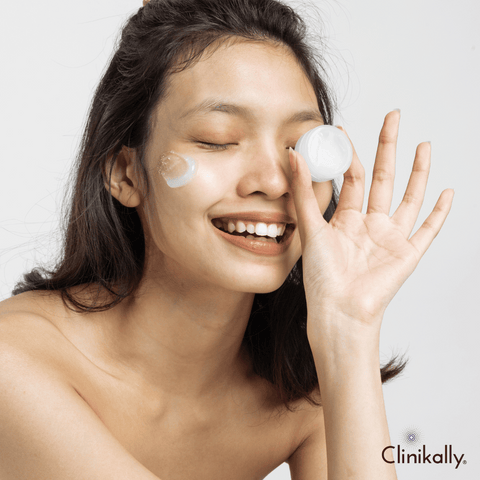
Cold cream is a versatile skincare product that can be used in a variety of ways to cleanse and moisturize the skin. Here are some steps you can follow to incorporate cold cream into your skincare routine:
-
Start with a clean face: Before applying cold cream, make sure your face is clean and free of makeup and other impurities.
-
Apply the cold cream: Take a small amount of cold cream and apply it to your face using your fingertips. Gently massage the cream into your skin, paying extra attention to areas where you have makeup or other impurities.
-
Remove the cold cream: Once you have massaged the cold cream into your skin, use a tissue or cotton pad to wipe it away. Be sure to remove all of the cream, including any residue around your hairline and neck.
-
Rinse your face: After removing the cold cream, rinse your face with warm water to remove any remaining residue.
-
Follow with a moisturizer: After using cold cream, it's important to moisturize your skin to keep it hydrated and nourished. Apply a moisturizer to your face and neck, and massage it gently.
You can use cold cream as part of your daily skincare routine, either in the morning or at night. It's a great option for people with dry or sensitive skin, and it can be particularly effective at removing makeup and other impurities from the skin. Remember to choose a cold cream that is suitable for your skin type and to use it in moderation to avoid clogging your pores.
Cold Cream for Sensitive Skin
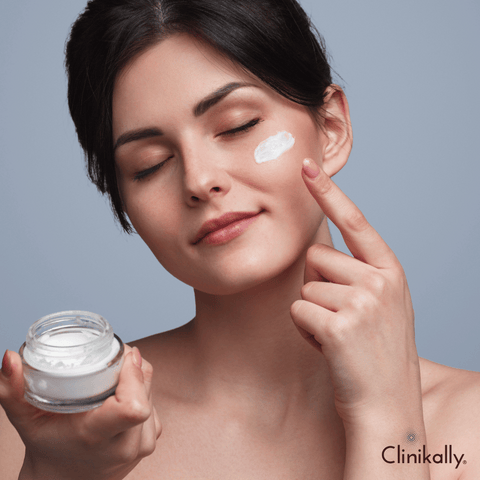
Cold cream is an excellent option for people with sensitive skin. It is gentle and non-irritating, and it can help to soothe and calm the skin, while also providing hydration and nourishment. Here are some tips for using cold cream for sensitive skin:
-
Look for a gentle formula: Choose a cold cream that is specifically formulated for sensitive skin. Look for products that are fragrance-free, hypoallergenic, and free from harsh ingredients like alcohol and sulfates.
-
Test it out first: Before using cold cream on your face, test it out on a small patch of skin to make sure you don't have an allergic reaction. Apply a small amount of cream to the inside of your wrist or behind your ear, and wait 24 hours to see if you have any redness, itching, or other signs of irritation.
-
Use it sparingly: While cold cream is gentle and non-irritating, it's still important to use it in moderation to avoid clogging your pores. Use a small amount of cream, and massage it gently into your skin.
-
Avoid harsh scrubbing: When removing the cold cream from your skin, avoid harsh scrubbing or rubbing, which can irritate sensitive skin. Instead, use a soft tissue or cotton pad, and gently wipe away the cream.
-
Follow with a gentle moisturizer: After using cold cream, it's important to follow up with a gentle moisturizer that is also suitable for sensitive skin. Look for a product that is free from fragrance and other irritants, and that provides hydration without clogging your pores.
By following these tips, you can use cold cream to cleanse and moisturize your sensitive skin, without causing irritation or other adverse reactions.
Cold Cream for Removing Makeup

Cold cream is an excellent option for removing makeup, as it can dissolve even stubborn makeup and leave your skin feeling clean and moisturized. Here are some tips for using cold cream to remove makeup:
-
Start with a clean face: Before applying cold cream, make sure your face is clean and free of any dirt or oil.
-
Apply the cold cream: Take a small amount of cold cream and apply it to your face, focusing on areas where you have makeup. Gently massage the cream into your skin using circular motions, making sure to cover all areas of your face.
-
Remove the makeup: Once you have massaged the cold cream into your skin, use a soft tissue or cotton pad to wipe away the makeup. Be sure to remove all of the cream and makeup, including any residue around your hairline and neck.
-
Rinse your face: After removing the cold cream and makeup, rinse your face with warm water to remove any remaining residue.
-
Follow up with a gentle cleanser: After using cold cream to remove makeup, it's a good idea to follow up with a gentle cleanser to ensure that all traces of makeup and cream are removed from your skin.
Using cold cream to remove makeup is an effective and gentle way to cleanse your skin, without stripping it of its natural oils. It's a great option for people with dry or sensitive skin, as it can help to hydrate and nourish your skin while removing makeup.
Cold Cream for Dry Skin
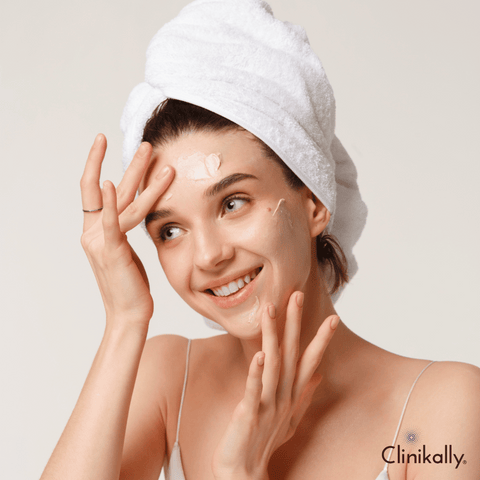
Cold cream is an excellent for people with dry skin, as it is rich in emollients and can help to hydrate and nourish your skin. Here are some tips for using cold cream for dry skin:
-
Choose a cream with hydrating ingredients: Look for a cold cream that is formulated with hydrating ingredients like glycerin, hyaluronic acid, or ceramides. These ingredients can help to lock in moisture and keep your skin feeling soft and supple.
-
Apply the cream to damp skin: To maximize the moisturizing benefits of cold cream, apply it to damp skin. This will help to lock in moisture and prevent your skin from drying out.
-
Massage the cream in gently: When applying cold cream to your skin, be sure to massage it in gently using circular motions. This will help to stimulate blood flow to your skin and enhance the moisturizing benefits of the cream.
-
Leave the cream on for a few minutes: For maximum hydration, leave the cold cream on your skin for a few minutes before wiping it away. This will allow the emollients to penetrate your skin and provide deep hydration.
-
Follow up with a moisturizer: After using cold cream, be sure to follow up with a moisturizer to help seal in the hydration. Look for a moisturizer that is specifically formulated for dry skin and that contains ingredients like shea butter or jojoba oil.
By following these tips, you can use cold cream to help hydrate and nourish your dry skin, leaving it feeling soft, supple, and moisturized.
Cold Cream for Anti-Aging

Cold cream can be beneficial for anti-aging skincare as it can help to moisturize and nourish the skin, which can reduce the appearance of fine lines and wrinkles. Here are some tips for using cold cream for anti-aging:
-
Look for a cream with anti-aging ingredients: Choose a cold cream that contains ingredients like retinol, antioxidants, or peptides, which can help to reduce the signs of aging and promote collagen production.
-
Apply the cream daily: To see the benefits of cold cream for anti-aging, it's important to use it daily. Apply the cream to your face and neck each night before bed, and massage it gently into your skin.
-
Be gentle: When applying cold cream to your skin, be sure to be gentle and avoid harsh rubbing or scrubbing. This can cause irritation and damage to your skin, which can exacerbate the signs of aging.
-
Use a gentle cleanser: To maximize the anti-aging benefits of cold cream, be sure to use a gentle cleanser that is formulated for aging skin. This will help to remove dirt and oil without stripping your skin of its natural oils.
-
Follow up with a moisturizer: After using cold cream, be sure to follow up with a moisturizer that is specifically formulated for aging skin. Look for a product that contains hydrating ingredients like hyaluronic acid or glycerin, and that can help to lock in moisture and reduce the appearance of fine lines and wrinkles.
By following these tips, you can use cold cream to help moisturize and nourish your skin, which can help to reduce the appearance of fine lines and wrinkles and promote a more youthful complexion
How to Choose the Right Cold Cream for Your Skin Type

Choosing the right cold cream for your skin type is important to ensure that you get the maximum benefits from the product. Here are some tips for selecting the right cold cream for your skin type:
-
Dry skin: If you have dry skin, look for a cold cream that is formulated with emollients and hydrating ingredients like glycerin, shea butter, or ceramides. These ingredients can help to moisturize your skin and prevent dryness and flakiness.
-
Oily skin: If you have oily skin, look for a lightweight cold cream that is non-comedogenic and oil-free. Avoid products that are heavy or greasy, as they can clog your pores and exacerbate oiliness.
-
Combination skin: If you have combination skin, look for a cold cream that is balanced and designed to work well for both dry and oily areas. You may want to consider using different products on different areas of your face, depending on your skin's needs.
-
Sensitive skin: If you have sensitive skin, look for a gentle cold cream that is free from fragrances, dyes, and other potential irritants. Avoid products that contain alcohol or other harsh ingredients that can cause irritation.
-
Mature skin: If you have mature skin, look for a cold cream that contains anti-aging ingredients like retinol, antioxidants, or peptides. These ingredients can help to reduce the signs of aging and promote collagen production.
By selecting the right cold cream for your skin type, you can ensure that you get the maximum benefits from the product and avoid any potential irritation or negative side effects. Consider speaking with a dermatologist if you have any questions or concerns about selecting the right cold cream for your skin type.
DIY Cold Cream Recipes
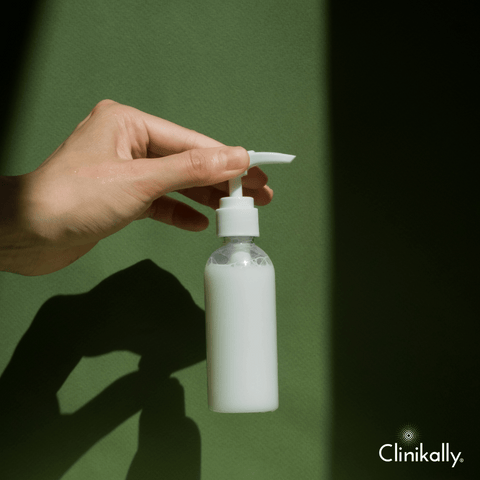
Here are some DIY cold cream recipes you can try at home:
Simple Cold Cream Recipe
-
1/2 cup of beeswax
-
1/2 cup of coconut oil
-
1/2 cup of olive oil
-
1/4 cup of rose water
Instructions:
-
Melt the beeswax, coconut oil, and olive oil together in a double boiler.
-
Once melted, remove from heat and stir in the rose water.
-
Pour the mixture into a jar or container and allow it to cool and solidify.
-
To use, scoop a small amount of the cold cream onto your fingers and massage it gently into your skin.
Lavender Cold Cream Recipe
-
1/2 cup of beeswax
-
1/2 cup of shea butter
-
1/2 cup of almond oil
-
15 drops of lavender essential oil
Instructions:
-
Melt the beeswax, shea butter, and almond oil together in a double boiler.
-
Once melted, remove from heat and stir in the lavender essential oil.
-
Pour the mixture into a jar or container and allow it to cool and solidify.
-
To use, scoop a small amount of the cold cream onto your fingers and massage it gently into your skin.
Honey and Milk Cold Cream Recipe
-
1/4 cup of beeswax
-
1/4 cup of almond oil
-
1/4 cup of coconut oil
-
1/4 cup of honey
-
1/4 cup of milk
Instructions:
-
Melt the beeswax, almond oil, and coconut oil together in a double boiler.
-
Once melted, remove from heat and stir in the honey and milk.
-
Pour the mixture into a jar or container and allow it to cool and solidify.
-
To use, scoop a small amount of the cold cream onto your fingers and massage it gently into your skin.
These DIY cold cream recipes are easy to make and can be customized to suit your individual skincare needs. Always patch-test any new skincare product before applying it to your entire face to avoid any potential allergic reactions or irritation.
Cold Cream and Acne
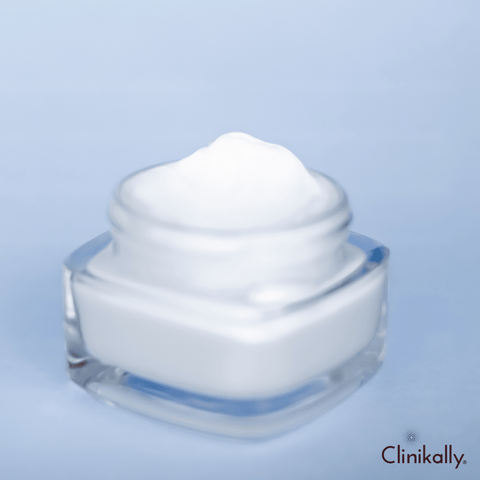
Cold cream is a heavy, oil-based product that can potentially clog pores and exacerbate acne-prone skin. However, there are some types of cold creams that may be suitable for acne-prone skin, especially if they are formulated with non-comedogenic ingredients and are designed to be gentle and non-irritating.
Here are some tips for using cold cream if you have acne-prone skin:
-
Look for cold creams that are labelled as non-comedogenic, oil-free, or specifically designed for acne-prone skin. These products are less likely to clog pores or trigger breakouts.
-
Avoid cold creams that contain heavy oils or greasy ingredients like mineral oil, petrolatum, or lanolin. These ingredients can clog pores and exacerbate acne.
-
Patch test any new cold cream before applying it to your entire face. Apply a small amount to a small area of your skin and wait 24-48 hours to see if you experience any adverse reactions.
-
Use cold cream as part of a double cleansing routine. First, use a gentle, water-based cleanser to remove dirt and makeup from your skin. Then, apply a thin layer of cold cream to your skin and gently massage it in. Use a damp washcloth to wipe off the cold cream and any remaining makeup or dirt.
-
Be gentle when using cold cream. Avoid rubbing or scrubbing your skin too hard, as this can cause irritation and breakouts.
Overall, cold cream may not be the best choice for acne-prone skin. If you have persistent acne or are concerned about breakouts, consider speaking with a dermatologist to develop a skincare routine that is tailored to your individual needs.
Is Cold Cream Right for You?
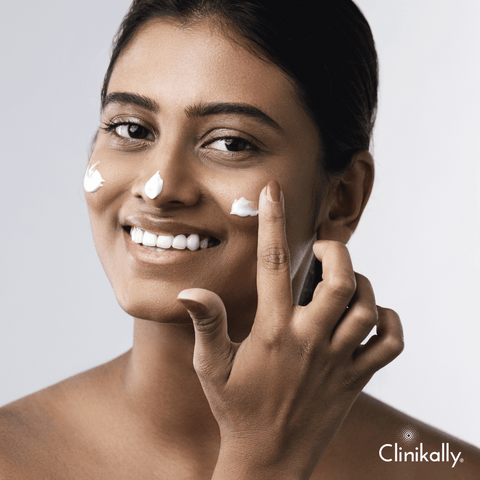
Whether or not cold cream is right for you depends on your individual skin type and skincare needs. Cold cream can be a great choice for those with dry or sensitive skin, as it can help to moisturize and soothe the skin. It can also be a good option for those who wear heavy makeup, as it can effectively remove stubborn makeup without stripping the skin of its natural oils.
However, if you have oily or acne-prone skin, cold cream may not be the best choice, as it can potentially clog pores and exacerbate breakouts. It's important to choose a cold cream that is specifically formulated for your skin type and to patch-test any new products before applying them to your entire face.
Ultimately, whether or not you should use cold cream in your skincare routine depends on your individual skin type and concerns. If you're unsure whether or not cold cream is right for you, consider speaking with a dermatologist or skincare professional for personalized recommendations.









































